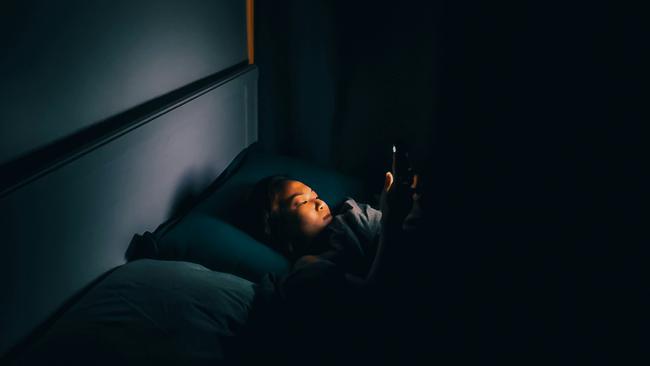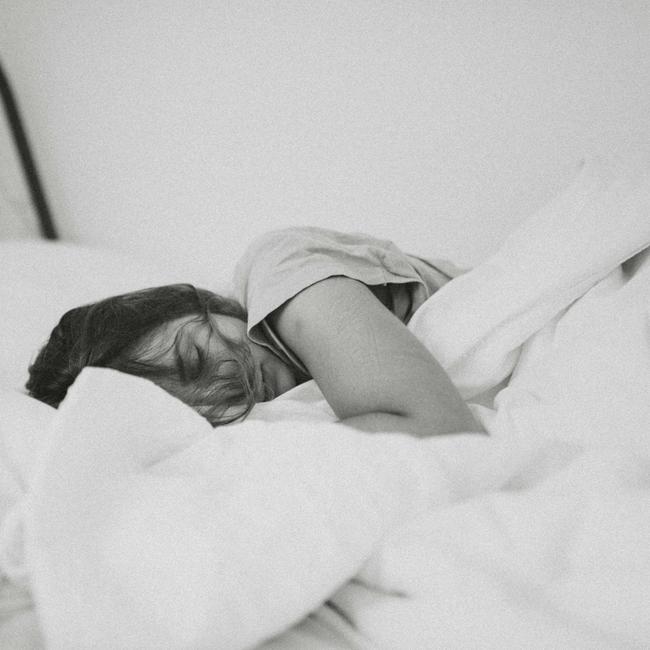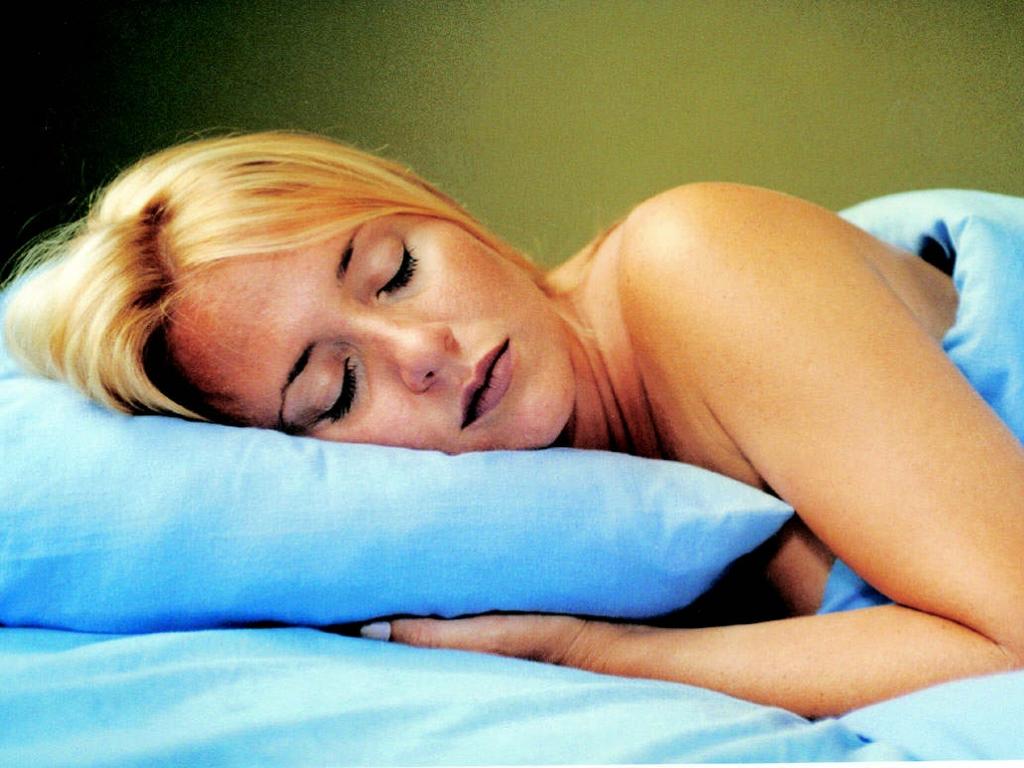Back-to-basics approach key to getting a full-night’s rest
From rocking to noise therapy, swaddling to self-soothing, the back-to-basics approach to newborn sleep might hold the key to a better night’s rest at any age.

I wish they’d make one of these things for grown-ups,” my husband and I would often quip after laying our newborn son down in the Snoo, a fandangle, motorised bassinet replete with white noise and, most impressively, a cot base that continuously sways – left, right, left, right.
The idea? A parent’s pregnant belly is a cosy, humming, constantly moving home for the first nine months of life, so why not mimic the soothing sensations of the womb says the brand’s co-founder Dr Harvey Karp, outside of it? That’s also the premise behind a host of sleep assists that could have been lifted straight from the pages of a dogeared newborn sleep bible. Chief among them: rocking.
“It’s one of the first sensory stimulations we ever encounter as a human in the world,” says Aurore Perrault, a Sydney-based sleep researcher at the Woolcock Institute of Medical Research. “I think that’s the beauty of it.”
Perrault and her colleagues examined the sleep patterns of 18 healthy participants during a full night’s sleep on a purpose-built rocking bed. “We found that you sleep longer in a deeper sleep – which is known to be restorative – and there’s less fragmentation in sleep, so less micro-awakening and a faster entrance into a deep sleep.”
The benefits persisted long after waking up, too, with the data suggesting quality sleep was linked to improved memory function. “We indeed found that after the night of rocking all participants had better memory performance than after a stationary night,” says Perrault.
A hotbed of sleep enthusiasts on social media would agree. On TikTok, #somaticrocking unlocks a host of influencer-led support for rocking – simply shifting from side to side – to reduce stress and assist sleep. In real life too, the calming effects of gentle movement have even sparked a two-day ‘restorative rocking’ retreat in the UK which promises to calm the nervous system and release tension via the gentle self-soothing technique.
In pursuit of sound shut-eye, many are willing to try (almost) anything. And for good reason. Recent data published in The Real Sleep Report 2023 found nearly 40 per cent of Australians frequently have trouble falling asleep, while a pivotal 2021 national sleep survey reported around a third of us are getting less than the optimal seven hours a night.

New York-based Australian actor Rose Byrne told The Wall Street Journal she tapes her mouth shut before bed to promote nose breathing – a wellness hack devotees attest increases oxygen intake, calms breathing and boosts circulation – while one sleep-obsessed colleague refers to her bedroom as “the womb” replete with block-out blinds, a weighted eye mask and static white noise. It’s little wonder, too, that sleep tracking devices like the Oura ring – popularised by celebrities including Kim Kardashian and Gwyneth Paltrow – are the accessory de rigueur as we bio-hack our way to superior sleep.
‘I think it’s great that people have realised the importance of good sleep and quite okay others are looking for innovative ways to improve sleep’
However gimmicky and creative, Professor Simon Smith, a psychologist and sleep academic at The University of Queensland, predicts the quest for better sleep is universally beneficial. “I think it’s great that people have realised the importance of good sleep,” says Smith, “and quite okay that others are looking for innovative ways to improve sleep.”
Other tried and tested newborn sleep hacks gaining traction are weighted blankets and white noise. Mimicking the security of a cosy swaddle and ranging from two to 11 kilograms, weighted blankets power up the parasympathetic nervous system – the body’s “rest and digest” gearbox – via deep pressure stimulation. While the cocoon-like comforters are proven to benefit autistic children the jury’s still out on whether they promote a better night’s sleep.
“There is very little known about benefits for sleep in other groups,” says Smith. “A recent review found potential benefits for reducing anxiety, but not for improving sleep, and only in certain groups of people.”
When it comes to white noise – the static continuous hum designed to drown out disruptive background noise – a recent study of participants with insomnia found it reduced the time it takes to fall asleep by as much as 38 per cent. For others seeking to optimise their shut-eye, the benefits are individual. “A recent review found that they improved sleep in some people, made it worse in others, and overall the quality of evidence was poor. This is partly because there is no standard ‘dose’ or type of noise used,” says Smith.

Understanding the underlying cause of sleep problems is key, as well as recognising the common disrupters – hormonal shifts during puberty, pregnancy, post-partum and menopause – over which we have little control. “One of the beauties of sleeping toddlers is they don’t overthink it,” says specialist sleep physician Dr David Cunnington. “Sleep’s a pretty simple basic human function and often the problem is we’re getting in the way.”
For all our sleep-hacking aptitude, most experts agree on a few fundamentals when it comes to getting a restorative night’s rest. Consistent sleep and wake times are imperative to a restful night, as is preparation – triggering your brain and body to wind down with the same nightly behaviours – and (newsflash!) limiting screen time. At night-time, dial down bright lights, avoid heavy meals and excessive alcohol. During the day, exercise and natural light will kick-start your circadian rhythm. For an extra sleep boost, meditation apps like Calm and Headspace can help quiet an overactive mind.
As for an adult-adapted Snoo? “It’s in our natural environment all the time. We fall asleep in cars, we fall asleep in trains. That’s basically the same mechanism. It’s a rhythmic movement that our brain is very sensitive to and promotes sleep,” say Perrault. “But it’s true that right now, I don’t have a solution, except that if you fall asleep [as a passenger] in the car, don’t feel bad. You’ll feel very good after.”
This article appears in the February issue of Vogue Australia, on sale now.





To join the conversation, please log in. Don't have an account? Register
Join the conversation, you are commenting as Logout